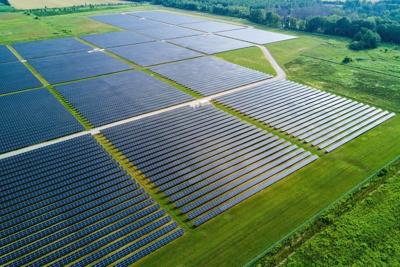During the recent federal election, candidates across the political spectrum talked about making Canada an energy superpower (again), with proposals including fast-tracking major energy projects and designating energy corridors.
Pundits also put forward previously “trial-ballooned” ideas, such as an east-west pipeline and an electricity transmission grid. These suggestions come amid a growing acknowledgment that energy development projects must ensure communities are equipped to withstand energy transitions and that populations historically neglected in benefits and decisions — such as Indigenous Peoples — must be front and centre.
With the election over, it now falls to the newly elected Liberal government to put words into action.
Making Canada an energy superpower is an ambitious yet crucial endeavour, particularly in light of the threats coming from south of the border. Here are four critical insights to make it happen:
Learn from the past, each other and elsewhere: Evidence spanning decades shows that social acceptance is vital to the success of energy projects — whether for renewables or conventional energy.
The Ontario government experienced this starting more than a decade ago when it tried to kickstart renewable energy projects in the province by offering long-term (20-year) contracts at a fixed price for electricity generated using renewable energy — including wind turbines — creating certainty around expected profits.
However, mistakes such as removing municipalities’ say over these developments, including the location of wind turbines, upset local communities and soured many on future projects.
These experiences underscore how important it is for energy developers to engage early and throughout the development process with affected communities.
Be attuned to the context: My research on energy in Brazil and Mexico makes it clear that context — time and place — is everything.
In São Paulo, Brazil, the population — heavily dependent on large-scale hydro for electricity — became more aware of and receptive to alternatives after experiencing repeated episodes of electricity rationing and power outages due to droughts in the early 2000s.
In the mid-2000s in Mexico City, the municipal secretary of environment (led by Mexico’s current President Claudia Sheinbaum) brought together key players on solar water heaters when that city was introducing a new regulation.
More recently, I have worked in the Canadian Arctic and subarctic. The region is changing profoundly and rapidly — it is warming at four times the rate as elsewhere, there are increasing assertions of Indigenous rights and insinuations that the region will become the theatre where our sovereignty will be tested.
When championing energy projects in the Arctic, governments must not assume that reducing carbon emissions is the principal driver for change. Issues concerning affordable, resilient and reliable energy are also top of mind for residents.
Go big and “go small”: We must ensure that our energy systems — including the electricity grid — and the public policies around them are “fit for purpose” or “future-proofed.”
In Canada and globally, extreme weather events — tornadoes, floods and catastrophic winds — are happening more frequently and wreaking havoc on energy systems, resulting in extremely costly repairs.
We need systemic public policy reforms — carrots, sticks and sermons — that allow for more innovation in energy systems.
This can include opportunities for microgrids (smaller, localized power grids) and demand-side management that incentivizes reduced electricity usage during certain periods at the household, neighbourhood or community level. These smaller systems can connect and disconnect as necessary to the larger grid, helping to manage energy consumption and keep grids stable.
Policy reforms can create more opportunities, if desired by communities, for new forms of decentralized electricity system ownership — like in Old Crow, Yukon, where a First Nations-owned solar farm helps power the community.
Lessons for governments: Making Canada an energy superpower will require governments to empower communities to have a say in development occurring in and around them and incentivize energy proponents to engage with communities early on and throughout the process.
Additionally, they must account for alternative metrics beyond costs — including environmental and social impacts — and implement strategies to reduce uncertainties for potential investors.
Governments must also help communities and regions anticipate, proactively prepare and weather energy transitions — in ways decided by the communities.
Transforming Canada into an energy superpower will take more than words. The federal government must work collaboratively and with an innovative mindset with all players to ensure success.



























To join the conversation set a first and last name in your user profile.
Sign in or register for free to join the Conversation